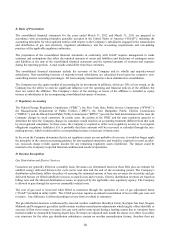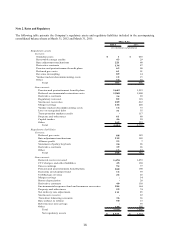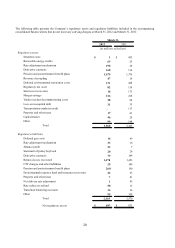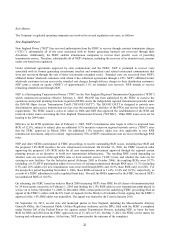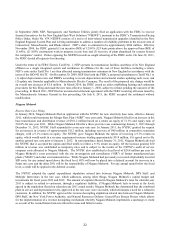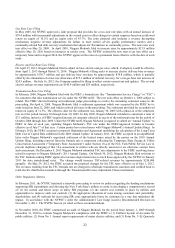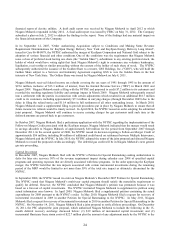National Grid 2012 Annual Report Download - page 15
Download and view the complete annual report
Please find page 15 of the 2012 National Grid annual report below. You can navigate through the pages in the report by either clicking on the pages listed below, or by using the keyword search tool below to find specific information within the annual report.14
financial statement and income tax purposes, as determined under enacted tax laws and rates. The financial effect of
changes in tax laws or rates is accounted for in the period of enactment. Deferred investment tax credits are amortized
over the useful life of the underlying property. Additionally, the Company follows the current accounting guidance
relating to uncertainty in income taxes which applies to all income tax positions reflected in the accompanying
consolidated balance sheets that have been included in previous tax returns or are expected to be included in future tax
returns.
The state of New York imposes on corporations a franchise tax that is computed as the higher of a tax based on income
or a tax based on capital. To the extent the Company’ s state tax based on capital is in excess of the state tax based on
income, the Company reports such excess in other taxes and taxes accrued in the accompanying consolidated financial
statements.
The Company collects certain taxes from customers such as sales taxes, along with other taxes, surcharges, and fees that
are levied by state or local governments on the sale or distribution of gas and electricity. Where these taxes, such as sales
taxes, are imposed on the customer, the Company accounts for these taxes on a net basis (excluded from revenues) with
no impact to our consolidated statements of income. Where these taxes, such as gross receipts taxes or other surcharges
or fees are imposed on the Company, the Company accounts for these taxes on a gross basis.
L. Comprehensive Income
Comprehensive income is the change in the equity of the Company, not including those changes that result from
shareholder transactions. The primary component of comprehensive income is net income. Accumulated other
comprehensive income includes the other components such as unrealized gains and losses associated with certain
investments held as available for sale by the Company and its equity investments, hedging activity, and non-qualifying
defined benefit pension and postretirement plans and certain defined benefit pension and postretirement plans for entities
which do not receive regulatory recovery.
M. Employee Benefits
The Company follows the accounting guidance related to the accounting for defined benefit pension and postretirement
plans which requires employers to fully recognize all postretirement plans’ funded status on the consolidated balance
sheet as a net liability or asset and requires an offsetting adjustment to accumulated other comprehensive income in
shareholders’ equity, in the case of regulated enterprises, to regulatory assets or liabilities. The Company has determined
that, for certain regulated entities which have mechanisms in place, such amounts will be included in future rates and
follows the regulatory format for recording the balances. As required by the guidance, the Company values its pension
and postretirement benefits other than pensions (“PBOP”) assets using the year-end market value of those assets. Benefit
obligations are also measured at year-end.
N. Supplemental Executive Retirement Plans
The Company has corporate assets included in other deferred charges in the accompanying consolidated balance sheets
representing funds designated for Supplemental Executive Retirement Plans. These funds are invested in corporate
owned life insurance policies and available for sale securities primarily consisting of equities and investments and
municipal and corporate bonds. Increases and decreases in the value of these assets are recorded through earnings in the
accompanying consolidated statements of income.
O. Derivatives
The Company uses derivative instruments to economically hedge a portion of the Company’ s exposure to commodity
price risk. Whenever hedge positions are in effect, the Company is exposed to credit risks in the event of non-
performance by counterparties to derivative contracts, as well as non-performance by the counterparties of the
transactions against which they are hedged.
Commodity Derivative Instruments – Regulated Accounting
The Company utilizes derivative financial instruments to reduce the cash flow variability associated with the purchase
price for a portion of future natural gas purchases associated with our regulated gas distribution operations. Our strategy








